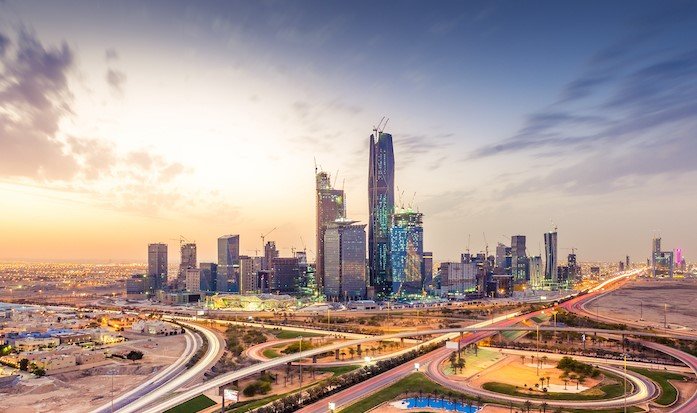Saudi Arabia’s ambitious Vision 2030 plan to transform its economy away from oil dependence is now facing a major hurdle from rising credit limits and foreign funding needs, according to a new Moody’s report. Released in October 2025, the analysis highlights how liquidity pressures are constraining the kingdom’s trillion-dollar projects, with banks and state companies increasingly relying on global markets to fill funding gaps.
Vision 2030 Drives Massive Investments
The Vision 2030 initiative, launched in 2016 by Crown Prince Mohammed bin Salman, aims to diversify Saudi Arabia’s economy through megaprojects in tourism, entertainment, and technology. This year, the plan has pushed non-oil growth to around 4.5 percent, with sectors like services and tourism leading the charge.
Recent data shows the Public Investment Fund, valued at over 900 billion dollars, is at the heart of this push. It funds key developments such as the NEOM smart city and Red Sea resorts. However, these efforts require enormous capital, leading to a surge in borrowing.
Experts note that while oil prices remain stable, the real challenge comes from internal funding strains. The kingdom’s banks have seen credit demand grow by 12 to 14 percent annually for five years, outpacing deposit increases of 6 to 9 percent.
This imbalance has forced financial institutions to seek alternative sources. In 2024 alone, Saudi banks issued bonds worth 15 billion dollars, more than double the previous year’s amount.
Liquidity Pressures Build Up
Moody’s report warns that the loan-to-deposit ratio crossed 100 percent in 2021 and has stayed high. By mid-2025, foreign funding made up 11 percent of total bank liabilities, up from 6 percent in 2020.

The shift has turned the banking system’s net foreign asset position negative for the first time in July 2024. Analysts say this exposes the economy to global market risks, including currency fluctuations and investor sentiment.
To counter these issues, the Saudi Central Bank added a counter-cyclical capital buffer in May 2025. This move, effective next year, aims to slow excessive loan growth and strengthen buffers against potential shocks.
State-backed companies are also tapping international markets. For instance, the Public Investment Fund has issued international bonds to support its investments.
- Rising credit demands from megaprojects like NEOM and Riyadh Air.
- Increased reliance on foreign bonds and hybrid instruments.
- Potential risks from global economic tightening.
Impact on Non-Oil Growth and Economy
Despite the challenges, Moody’s forecasts sustained non-oil growth of 4.5 to 5.5 percent over the next decade. This optimism stems from ongoing diversification efforts and a strong project pipeline.
The International Monetary Fund, in its 2025 Article IV review, praised Saudi Arabia’s resilience. It noted low unemployment and contained inflation, with non-oil activities expanding steadily.
However, government debt is expected to rise to about 36 percent of GDP as spending on Vision 2030 continues. This could strain budgets if foreign funding costs increase.
A balanced view shows both progress and pitfalls. While tourism and services boom, the funding crunch might delay some projects. Recent events, like the kingdom’s push for more foreign direct investment, aim to ease these pressures.
The economy grew by 3.9 percent in the second quarter of 2025, with non-oil sectors contributing over half. This marks a shift from oil-heavy reliance, where oil once accounted for 40 percent of GDP.
Funding Strategies and Global Integration
Saudi banks are adapting by deepening ties with global markets. Bond issuances in 2024 hit record levels, helping to plug gaps in domestic deposits.
Moody’s highlights that this integration brings benefits, such as access to diverse funding, but also heightens refinancing risks. If global conditions worsen, renewing debts could become tougher.
The report suggests the kingdom’s credit ceiling is now more tied to liquidity than oil volatility. This marks a new phase in Vision 2030’s evolution.
| Key Funding Metrics | 2020 | 2024 | 2025 (Mid-Year) |
|---|---|---|---|
| Foreign Funding (% of Liabilities) | 6% | 9% | 11% |
| Bond Issuances (Billion SAR) | 10 | 21 | 56 (Partial) |
| Loan-to-Deposit Ratio | 95% | 105% | 108% |
| Non-Oil Growth Rate | 2.5% | 4.2% | 4.5% |
This table illustrates the rapid changes in funding dynamics, underscoring the shift toward external sources.
Looking ahead, experts recommend boosting domestic savings and attracting more foreign investment to sustain momentum.
Broader Implications for the Region
Vision 2030 is influencing neighboring Gulf countries, driving capital market growth across the region. Saudi Arabia’s strategies are positioning the Gulf Cooperation Council as an emerging financial hub.
However, challenges like debt servicing in developing nations echo similar global concerns. Saudi Arabia’s approach could serve as a model or cautionary tale.
With government spending set to continue, balancing ambition with financial stability remains key. Recent IMF statements affirm the kingdom’s strong fundamentals, but vigilance on liquidity is crucial.
As Saudi Arabia navigates these waters, the world watches how this transformation unfolds amid evolving economic pressures.
What are your thoughts on Saudi Arabia’s economic shift? Share this article and comment below to join the discussion.
